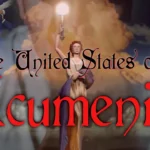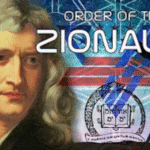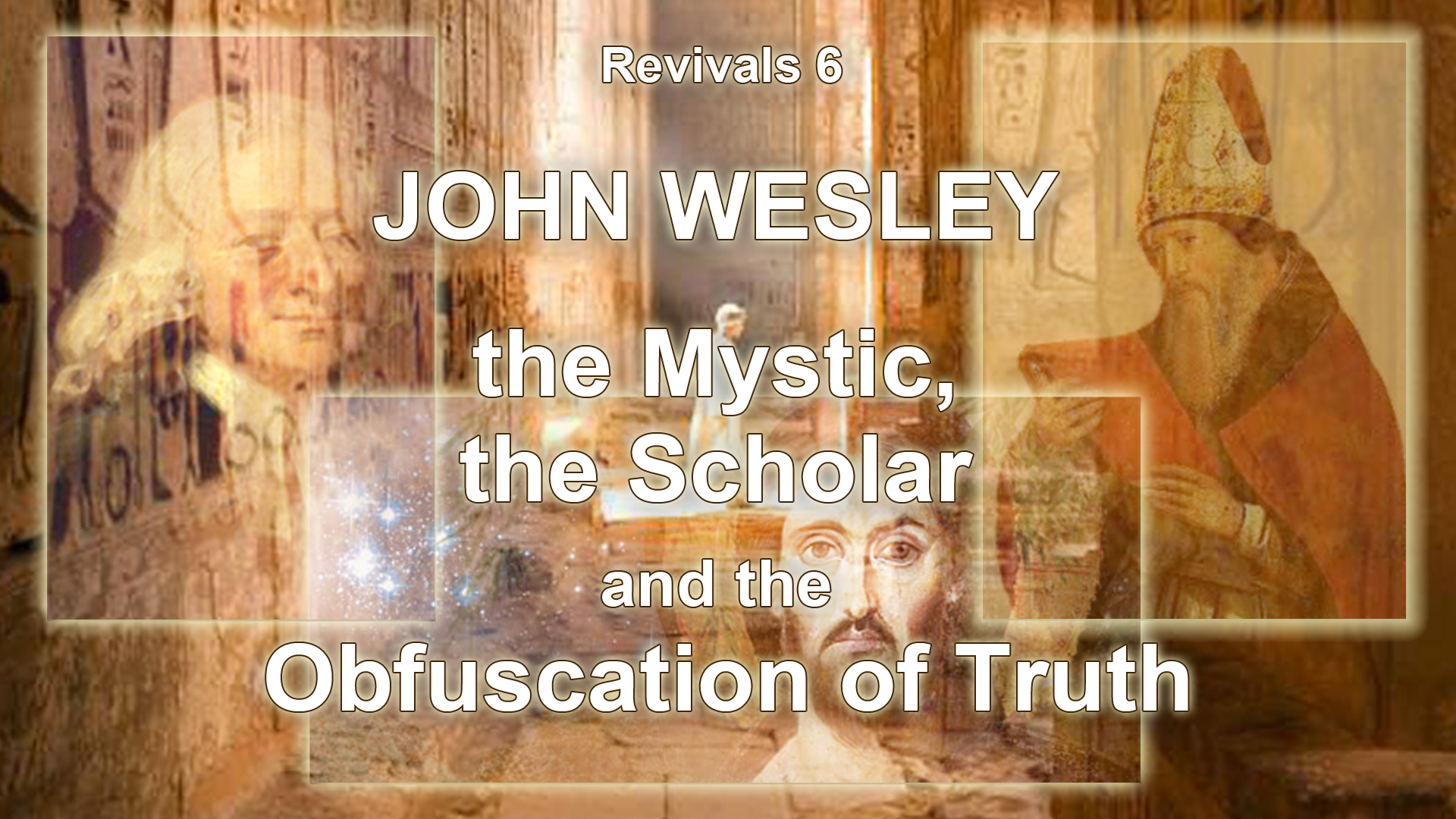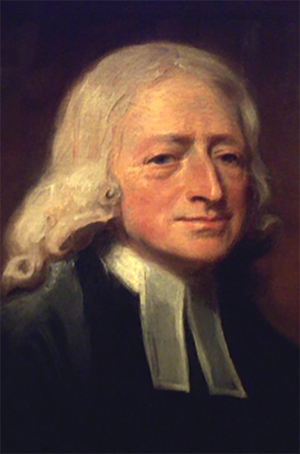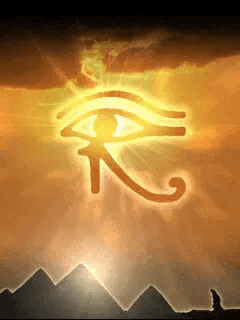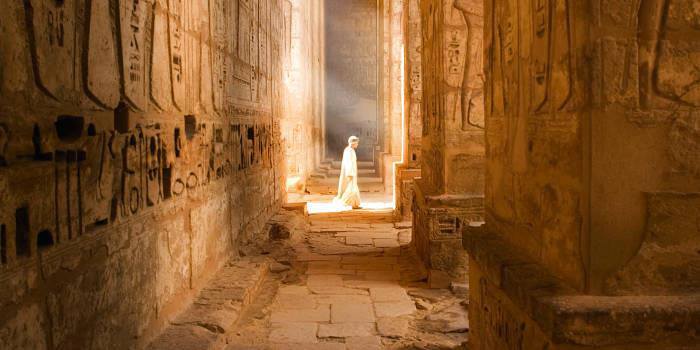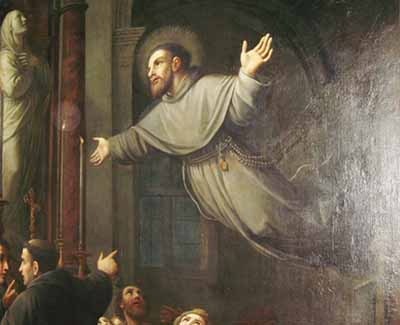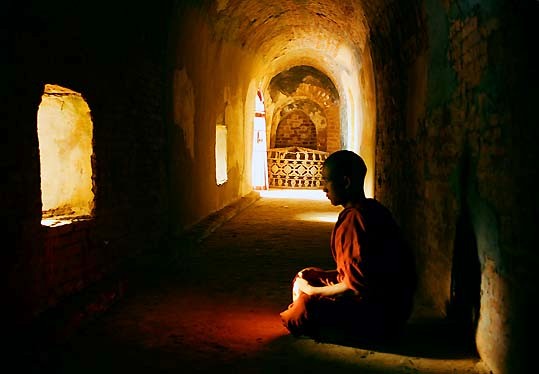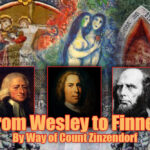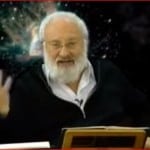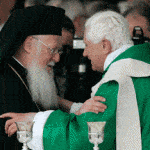Revised from 4/23/23

“Statements such as ‘I follow Christ, not creeds’ smack of Christian mysticism. Anyone who downplays the role of theology in the church or who speaks of going ‘beyond doctrine’ is following the path of the mystic. Such a person will usually gravitate toward practices such as contemplative prayer or walking through labyrinths. He or she may also begin to fixate on the work of the Holy Spirit to the exclusion of other areas of biblical instruction.” – Got Questions
In examining some of the well-known Revivalists and their roles in creating the Christianity we know today, we’re looking for traces of:
- The Counter Reformation
- Mystery School / Enlightenment Teachings (Mysticism/Scholasticism)
- Secret Society Membership or Affiliation
We found traces of all these in Whitefield and Edward’s lives. Of course we can’t speak to their intent, as only God knows the heart, but Jesus did say that we would know men by their “fruit” (Matt 7:16) and Paul instructed us to “test the spirits whether they be of God.” (1 Jn 4:1).
“Discernment” today is largely seen as exposing the dark practices of Luciferians and various aspects of their soft-kill agenda. But while we should be aware of those things, biblical discernment is chiefly about rightly dividing the Word of Truth and rejecting false teachings that have “crept into the church unawares” (Jude 1:4).
Just like Whitefield and Edwards, our first Arminianist, John Wesley, claimed to be “combating lifeless orthodoxy” and purported the need for a “second experience” in the Christian walk.
We seldom, if ever hear from pulpits about John Wesley’s fascination with Medieval Mysticism, and how he translated books of the Mystics and methodically infused their ideas into his theology. Given he and his contemporaries’ bent toward mystical thought, we’re going to take a look at the origins of Christian Mysticism.
In Wikipedia we read,
“Until the sixth century the practice of what is now called mysticism was referred to by the term contemplatio, c.q. theoria, from contemplatio (Latin; Greek θεωρία, theoria), “looking at”, “gazing at”, “being aware of” God or the divine. Christianity took up the use of both the Greek (theoria) and Latin (contemplatio, contemplation) terminology to describe various forms of prayer and the process of coming to know God…
Both contemplation and mysticism speak of the EYE OF LOVE which is looking at, gazing at, aware of divine realities.” – Wikipedia
The foundational ideas of Christian Mysticism were laid by Origen and Augustine of Hippo:
Origen (185–253 AD) with his allegorical interpretations of Scripture and his emphasis on theosis (union with God). Drawing his deep contemplative approach from Neoplatonism, he saw spiritual ascent as a journey of purification, illumination, and eventual union with God. He was also a systematic theologian(!)
Augustine’s (354–430 AD) mystical thoughts are seen in Confessions and The City of God. His mystical experience of divine illumination and belief in the soul’s ascent toward God through contemplation also reflect the influence of Neoplatonism. He blends these mystical ideas with a strong emphasis on doctrine, sin, and grace.
Other early Christian Mystics included Montanus* and subsequently, Tertullian who followed him.
Montanus was a former priest of Cybele’s (pagan) ECSTATIC cult. He introduced a form of Christianity; Montanism that was focused on prophecy, visions, and supernatural manifestations, emphasizing direct spiritual experiences over Scripture.
The Ecstatic States of Jonathan Edward’s wife and those that are seen throughout the Revivals as well as extreme Pentecostalism today actually originate in Occultism and Pagan Religions, which hold them as the means of divine communication, possession, or mystical union:
- Ancient Pagan practices included rituals, dance, music and substances to open a gateway to the supernatural.
- Shamans throughout history and still today use drumming, fasting, hallucinogenic plants and frenzied dances to enter trances and communicate with spirits.
- In 5th Century BC Greece, the followers of Dionysus, the Greek god of wine and chaos engaged in frenzied rituals and danced themselves into altered states. Women would reach such ecstatic highs that they reportedly tore animals (and sometimes people) apart in their wild abandon.
- In 2nd Century BC Phrygia, the worship of the fertility goddess Cybele was marked by extreme emotionalism, self-mutilation, and frenzied, ecstatic prophecy. Priests castrated themselves in devotion 😳 and danced wildly to achieve spiritual possession.
- In Delphi, priestesses entered trances through rhythmic chanting and allowed Apollo (or other gods) to “speak” through them.
- In Hinduism and Eastern Mysticism (Ancient – Present) practices like yoga and meditation are used to induce trances and spiritual ecstasy, which is seen as merging with divine consciousness.
All these traditions have one common goal:
To Lose Self-Control in order to achieve Supernatural Experiences.
This is in direct contrast to scripture, which expressly tells us that Self-Control (sōphronismos) is a fruit of the Spirit (2 Tim 1:7; Gal 5:22-23).
It’s hard to keep all the names and dates straight, but here’s a quick list of some of the more well known Christian Mystics:
- Augustine of Hippo & Origen – both influenced by Neoplatonism (Oneism)
- Montanus (Roughly 101-200AD), founded Montanism. In addition to being a former priest of Cybele, he:
- Established a group of “enlightened ones” within his movement
- Entered an Ecstatic State and began prophesying in Phrygia (now in central Turkey)
- Montanists went into a frenzied state, had seizures, uttered strange languages that followers regarded as the “Holy Spirit.”
- Spoke of “New Prophecy,” Imminence of the End of Days, Jerusalem descending etc.
- Was rejected by the Early Church !
- Tertullian converted to Montanism in 207AD
- Later embraced the Neoplatonism (Oneism)
- Thomas Kempis (1380-1471) Best known for his Book, The Imitation of Christ
- St. Thomas Aquinas (the levitating Catholic priest)
Christian Mysticism also has significant links to Judaism. For one example, both Origen and Augustine subtly transformed the Jewish Mystical concept of Shekinah (God’s experienced, manifest presence) into Gnosis, blending divine revelation with the pursuit of occult/hidden spiritual knowledge. Judaism also;
- Placed women in prominent positions
- Represented a Mishnaic (oral law) influencing Food Restrictions
- Taught Millenarianism (Ya, that coming earthly reign of Christ stuff Evangelicals are so fond of).
…we recognize these in various modern Christian denominations.
How Mysticism Crept Into the Reformation
The Reformed theologian Rev. Herman C. Hanko addresses the problem of mysticism in the church in his article “Thomas A. Kempis and Medieval Mysticism.”
“We can find, I think, an explanation for mysticism and its constant attractiveness… Mysticism arises when the church does not preach the full gospel of Jesus Christ, or at least does not live fully the gospel which she preaches…” – H. C. Hanko
I appreciate Hanko’s rejection of mysticism, but he counters the error with carnal reason:
“Man is created by God as a creature with a soul. The soul includes mind and will. And the will, in turn, includes the powers of choice and the powers of emotions. God has determined that fellowship with Him through Jesus Christ includes the whole man in body and soul, in mind and will.” – ibid
R.G. Tuttle, quoted in Hanko’s article, also mistakenly addresses man in purely carnal terms of intellect and soul:
“…mysticism is anything that gets one in touch with reality beyond the physical senses…. mysticism embraces a “right brain” awareness of God and all mystics stress (more or less) the essential unity of God, nature, and humankind; therefore, union with God can be achieved (more or less) through the mystical contemplation of the unity. More specifically, mysticism is in essence that “deep sense of union with God in the inmost depths of the soul,” an immediate awareness of a unique relationship with God. It is religion in its most acute, intense and living state.” – Robert G Tuttle – Mysticism in the Wesleyan Tradition
Tuttle is also right about mysticism, but scripturally still misses the boat. He later describes mysticism in the same ways many modern Christians describe Holy-Spirit-given experiences.
“To understand mysticism, one must experience mysticism [reminds me of what they told me when I was invited to a Tres Dias weekend]. Its thoroughly esoteric nature plunges the soul into depths of truth unplumbed by the discursive intellect. The mystical experience is also transitory because the mystical heights cannot be sustained for long [Tres Dias renewal weekends again], but this is not to imply that no growth has taken place. Ideally, after each experience the mystic returns to a level of devotion even higher than before.” – ibid
Back to Hanko,
“Mysticism, in many cases began to emphasize dreams, visions, and other forms of revelation which one would receive directly from God apart from the scriptures. When the Zwickau Prophets boasted of the revelations they had received from the Holy Spirit, Martin Luther responded, ‘I hit your holy spirit on the snout.’” – H.C. Hanko
Luther wasn’t denying the Holy Spirit. Rather, he was opposing counterfeit spirituality; mysticism that masqueraded as spiritual truth and contradicted or added to God’s written Word. Luther is a complicated subject himself, but we won’t take the space to explore that here.
Hanko goes on to make an important point;
“… in the quest for union with God and absorption into the divine being, the mystic bypasses Christ… when one reads the mystics one cannot help but think that the union with God which the mystic holds up as the ideal religion is such complete absorption into the divine essence that Christ is no longer the only way to the Father. One goes directly to God and hurls himself into the brilliantly shining ocean of the divine being without coming to Christ.” – ibid
Hanko rightly exposes Mysticism’s elevation of feelings and revelations over Scripture, but offers a lifeless creed in return—a faith of the mind. He defends the Holy Spirit, but, responding to revivalists’ Mysticism with Intellectualism, he misses the Miracle of New Spiritual Personhood in Christ.
Ah, you perceive well Grasshopper!
This Mystery School Dialectic was woven into Christianity through the Roman Catholic church, followed it into the Reformation, and remains in place to this day.
Scripturally; a Christian is not just someone who believes truths about Christ. A Christian is someone who has been born of the Spirit (John 3), made alive in the Spirit (Romans 8), and walks by the Spirit (Galatians 5). Any teaching that either embraces Mysticism or reduces the believer to Intellect— both being Mystery School Thought— misses the believer’s miraculous New Personhood in Christ.
He who is joined to the Lord is one spirit with Him. (1 Cor 6:17).
For a more complete understanding of the regenerate man; his new nature and identity in Christ, I turn again to Professor David Needham’s critical work, “Birthright, Christian Do You Know Who You Are?” (Sorry to be redundant, but I have yet to find anyone else who explains it this well).
“But there is one serious error – a tragic flaw. An error that pervades dozens of popular books on the Christian life. I wish I could shout these next lines around the world! A Christian is not simply a person who gets forgiveness, who gets to go to heaven, who gets the Holy Spirit, who gets a new nature. Mark this – a Christian is a person who has become someone he was not before. A Christian, in terms of his deepest identity, is a SAINT, a born child of God, a divine masterpiece, a child of light, a citizen of heaven. Not only positionally (True in the mind of God but not true in actuality here on earth), not only judicially (a matter of God’s moral bookkeeping), but ACTUALLY.” David Needham, Birthright: Christian Do You Know Who You Are (p. 47) Formatting added

Rather than dividing men into intellect and emotion/soul, the New Testament describes those born of God through faith in Jesus Christ as “flesh and spirit.” This is an important distinction, since, in the Bible, “flesh” encompasses the intellect, the emotion and soul (carnal man). But those who, through Christ, are born in spirit have the added element of LIFE IN THE SPIRIT. When a person is born again, this replaces the soulish aspect of the flesh as MAN’S TRUE INNER BEING (Romans 7:22). It is through this new spiritual life and the Holy Spirit that we commune with God. (John 3:6-7)
If you want to get good and confused try googling “man body soul spirit” for a graphic representing this. 😵 No, seriously, don’t do that, you will get confused. Just read on.
See, because the god of this world lives within the confines of the creation, Mystery School thought views man only in his fallen, carnal state. The enemy’s areas of influence are limited to intellect, emotion and soulish/carnal spirituality which originates in the unseen “heaven” within this created realm. This is known in the Bible as the realm of the deceptive “spiritual hosts of wickedness in heavenly places (ie. demons.)” (Eph 6:12) *Sorry John MacArthur, the “second heaven” is not imaginary “outer space.”
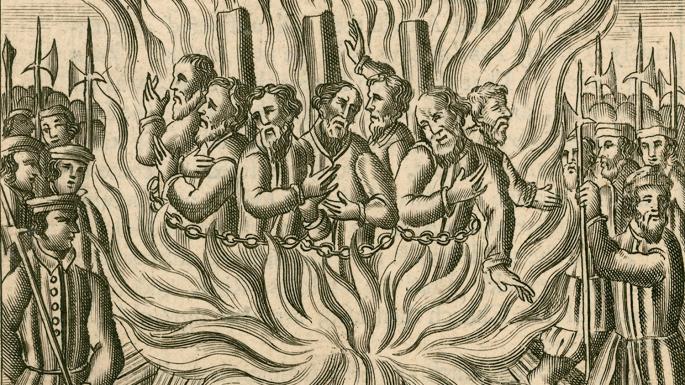
Needham again,
“I do not believe the New Testament gives us any justification for the idea that the new believers knew they had received the Holy Spirit simply because someone informed them of the fact. As if they wouldn’t have known it unless someone had come along and told them. No! Such a view hardly parallels such statements as these:
‘Did you receive the Spirit by observing the law, or by believing what you heard?’ (Galatians 3:2)
‘Did you receive the Holy Spirit when you believed?’ (Acts 19:2)
‘And if anyone does not have the Spirit of Christ, he does not belong to Christ.’ (Romans 8:9)
‘And this is how we know he lives in us: We know it by the Spirit he gave us.’ ( 1 John 3:24; cf. 1 John 4:13)
Not to mention the experiential emphasis of Acts 11:15-17 or Acts 15:8. Of course it was an experienced thing! They knew a radical event had taken place! In that miraculous event of receiving the Spirit, new covenant life poured into their deepest beings. They had been “born of the Spirit.” Out of their innermost being “Streams of living water” were flowing.
Jesus was Lord! They understood God’s truth as they had never understood it before. There was joy and spiritual power. They loved and cared for one another as they never had loved and cared before. They witnessed with conviction and boldness. And in many cases, there were very special manifestations of the fact that the spiritual flow between themselves and God was open and active: they spoke in tongues and prophesied.
Listen again – really listen – to the words of our Lord Jesus:
‘If a man is thirsty, let him come to me and drink. Whoever believes in me, as the Scripture has said, streams of living water will flow from within him (“from his innermost being” NASB). By this he meant the Spirit, whom those who believed in him were later to receive.’ (John 7:37-38)”
In conclusion:
True spirituality is not mysticism.
It is not veiled (2 Cor 3:14).
It is not secretive (Luke 8:17).
It is not reserved for an elite few (1 Cor 2:12).
It is not built on feelings, impressions, or inner whispers that stray beyond the Word of God (2 Pet 1:3–8).
It doesn’t rise up from within us but comes down from the Source of Life Himself (Rom 8:14).
Mysticism is Satan’s carnal counterfeit of true Christian experience and joy.
And true spirituality is not intellectualism.
It is not found through human logic (Isa 55:8–9).
It is not the fruit of prideful reasoning (Prov 3:5–6).
It cannot be reached through self-willed intellect or cleverness (Jn 14:26).
It is not just a stack of facts, doctrines (Rom 12:2), or religious philosophies (Js 1:22–25).
It is not the product of your mind, your will, or your emotions.
Intellectualism is Satan’s carnal counterfeit of true wisdom—a false light that opposes humility before God, and blinds the soul to the Spirit.
We’ll talk more about Wesley next time! Until then, God bless you and stay watchful!
to be continued…
Revivals Pt1 – Asbury: Let’s Talk About Revivals
Revivals Pt2 – Enlightenment in the Land of the Plumed Serpent
Revivals Pt3 – Mystery Schools, The RCC and the Reformation
Revivals Pt4 – The First Great Awakening & The Enigmatic George Whitefield
Revivals Pt5 – The Brimstone and Mysticism of Jonathan Edwards
Revivals Pt 6 – John Wesley (1 of 2) – The Mystery School Dialectic and Christian Mysticism
Revivals Pt 7 – John Wesley (2 of 2) More Mystics & Papal Doctrines of Men
Revivals Pt8 – From Wesley to Finney By Way of Count Zinzendorf
Revivals Pt9 – Charles Grandison Finney, Freemasonic Moralism and Modern Evangelicalism
Revivals Pt10 – The Pagan “Virus“
Revivals Pt11 – The Third Great Awakening: Pentecostalism!
Revivals Pt12 – Pentecostalism Pt2: The Founders of Pentecostalism
Revivals Pt 13 – Social Justice Pt 1 – They Don’t Mix
Revivals Pt 14 – Social Justice Pt 2 – A City Upon A Hill
Revivals Pt 15 – Christ in You vs Millennialism
Revivals Pt 16 – The Counterfeit Enlightenment Pt 1
Revivals Pt 17 – The Counterfeit “Enlightenment” Pt2: The Dark Ages and Golden Age of Islam
Revivals Pt 18 – The Counterfeit “Enlightenment” Pt 3: Islam In the Bible?
Revivals Pt 20 – The Counterfeit “Enlightenment” Pt5: Placing Man Upon An Esoteric Sphere
Revivals Pt21 – The Counterfeit “Enlightenment” Pt6: The Image of the Beast
Revivals Pt22 – Crowning the Lord of the Earth: The Cosmati Pavement
Revivals Pt24 – The Great American Mythos Pt2: A Whole New Mystically Enlightened World
Revivals Pt25 – Creating the American Mythos – Christopher Columbus: The Great American Hero Pt1
Revivals Pt 26 – Christopher Columbus Pt 2 – The Namesake Goddess of a “Christian” Nation
Revivals Pt27 – The Witchcraft of Numbers
Revivals Conclusion Pt2 – What Is The Gospel?
Revivals Conclusion Pt3 – Subversion – From Revivalists to Modern Times



